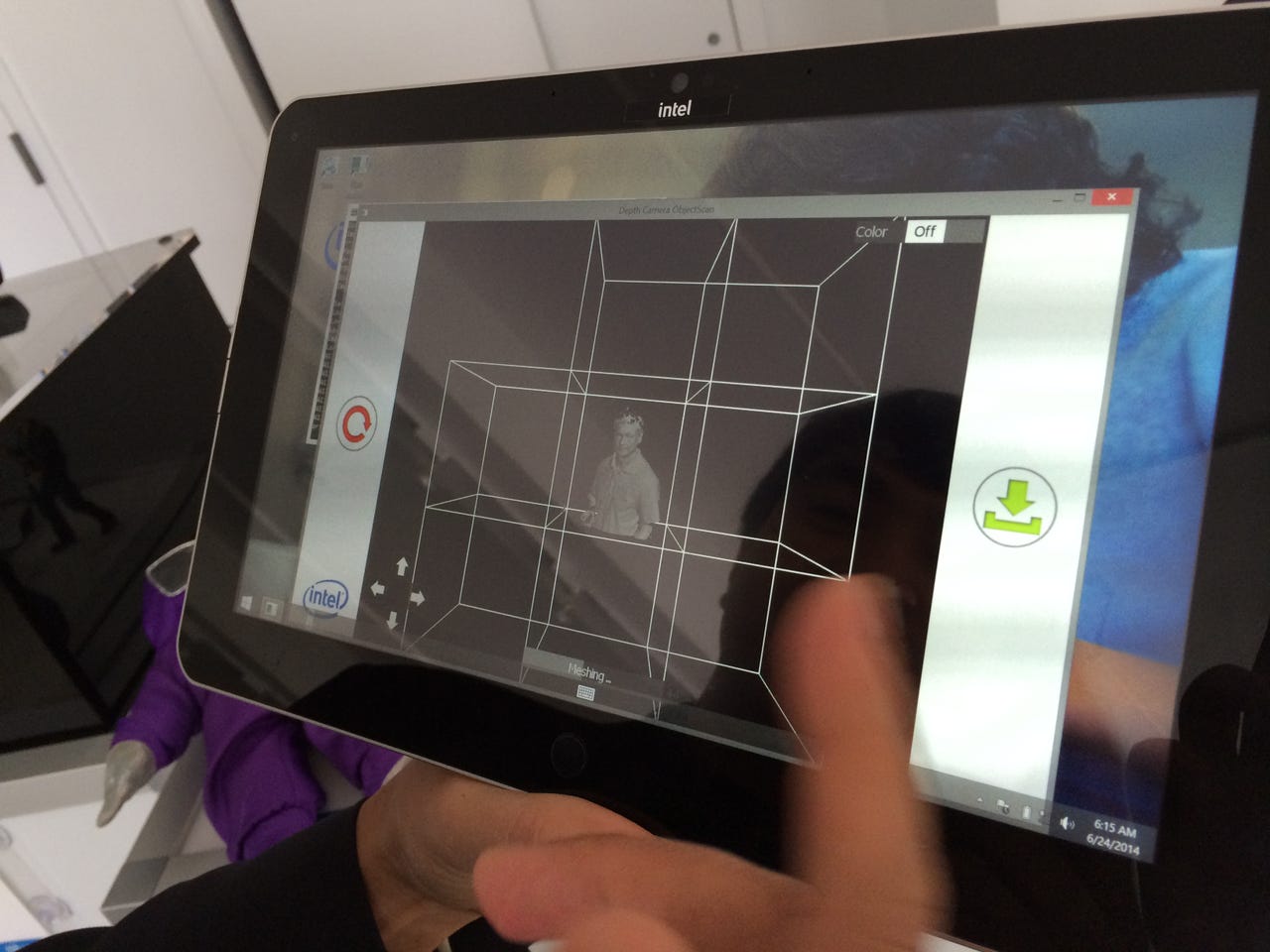Computer vision ramps as Intel, Amazon, Google push ahead

NEW YORK — Intel's move to put its RealSense 3D Cameras in laptops in the second half of 2014 and tablets in early 2015, coupled with Amazon's Fire Phone and Google's Project Tango, are all pointing to early commercialization efforts for computer vision, which allows devices to see depth.
On Tuesday, Intel's Future Showcase, a view of the tech world five years from now, rolled through New York and computer vision via gesture viewing, face tracking and integrated 3D depth cameras played a big role. Rest assured that these RealSense cameras will ultimately make it to Intel's open source Jimmy the Robot efforts (currently $1,600 for a version that can be 3D printed and $16,000 for one that's more suited to universities).
Brian David Johnson, Intel's futurist, said computer vision could change the robotic equation dramatically and allow them to sense depth and avoid pitfalls. "If 3D cameras can fit in a laptop it'll easily fit on Jimmy," said Johnson.

Intel's efforts so far revolve around the consumer market and games and video conferencing — 3D cameras will be utilized in Microsoft's Skype and Lync — but there are real business applications for 3D printing and other areas.
"We've been working on RealSense for three years," said Achin Bhowmik, Intel's CTO of perpetual computing. "We will have 3D cameras in tens of millions of devices."
As for business uses, China seems to like 3D video conferencing that provides an image without a background so the setting isn't revealed. 3D scanning could be used to create models, prototypes and replicas. As noted in January, face-reading cameras will determine emotion in retail settings.
Intel's efforts are early and 3D cameras will only improve and be able to track gestures and faces much better.
Amazon CEO Jeff Bezos last week referenced computer vision and the Fire Phone's set of cameras that track head movement and lines of sight. He talked about a four-year journey that included lab work and testing cameras in the real world to recognize faces vs. something like a cherub on a mug. Amazon's Firefly feature also "sees" a room and serves up data.
Project Tango, an effort by Google, also launched a tablet reference kit for developers. The aim is to create new experiences for consumers and businesses. In the end, Google will want to scan rooms and settings just like it does streets. Naturally, advertising and data nuggets will provide an overlay.
It's also worth mentioning that Apple bought PrimeSense, the chipmaker behind early versions of Microsoft's Kinect system, so there'll be some gesture-tracking technology surfacing at some point.